[ad_1]
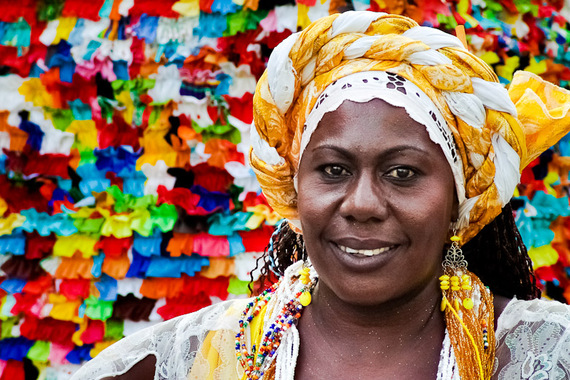
Nestled on the northeastern coast of Brazil, the city of Salvador, the capital of Bahia, can be described as the mecca of Candomblé. While Bahia comprises the second largest Black populous in the world, falling short to only the African continent (specifically, Nigeria) itself, the Yoruba religion, Ifá arrived to the shores of Bahia and integrated itself into Afro-Brazilian society and would later catalyze into the religion, Candomble.
From 1530, when the first Portuguese colonialists arrived in Bahia to 1888 — sixty-six years after Brazilian independence from Portugal and one year prior to the country becoming a republic — the importation and exploitation of Africans thrived; leaving the Portuguese with the legacy of producing the largest slave economy in the world. While the Portuguese enslaved several Africans, according to Sheila Walker, a scholar on Afro-Brazilian culture and religion, it was the Yoruba people “from present-day Nigeria and Benin…whose religious culture has remained most intact and influential in both Brazil and elsewhere in the Americas.” It is from the Yoruba culture, in which the divination system of Ifá originates and Afro-Brazilian religion Candomblé is derived.
In the Yoruba context, Ifá is regarded as an integral and essential a part of Yoruba history, mythology, religion and folk medicine. Intrinsic to Ifá are the divinities known as Orishas, which are manifestations of the high god, Olodumdare or Olòrún. Having their own unique characteristics, distinct chants, colors (which are known as ileke), numbers, foods and even literature, the Orisha have full autonomy and authority over the forces of nature as well as the power of working for or against humanity. The Orisha pantheon is seemingly limitless, as hundreds of entities comprise the pagoda include Èṣù (god of chaos and trickery); Orunmila (god of wisdom, knowledge and divination); Osun (the goddess of love, beauty and intimacy); Obatalá (creator of god of human bodies as well as owner of ori or heads) footnote; Ogun (god of hunting, iron and war); Sango (god of thunder, fire and lightening); Oya (goddess of wind and magic); Yemoja (goddess of the ocean and motherhood), and Osan-in (god of herbs, leaves and medicine).
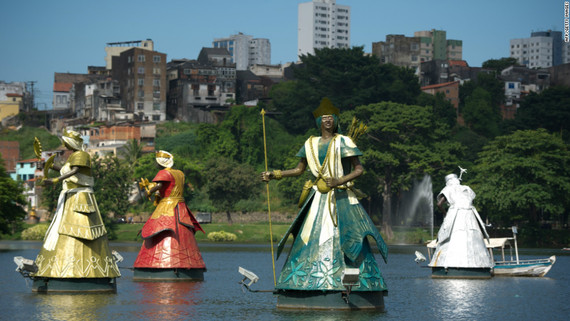
Just like many other religions, Ifá has its own unique story of creation–where Obatala molded human beings with clay supplied by Ogun, the Orisha of iron. According to Dr. Wande Abimola, author of “Ifá Will Mend Our Broken World” and the foremost scholar on Ifá, the high god, Olodumdare provided the vital breath force and heart known as Emi and Ajala, another potter of heaven, provided the inner or spiritual head. Ile-Ife, the ancestral home and city of the Orishas, is also the cradle of humanity. Prior to the creation of Ile-Ife, the earth was submerged with water and the Orisha descended from Oke ara — a mountain in the vicinity of Ile-Ife from whence the divinities descended after the creation of the Earth — to create dry land from water. With only a parcel of dust combined with a chicken and chameleon, dry land began to appear as a chicken scratched and spread solid earth in various directions.
Dubbed as the “African Rome”, Candomblé in Salvador da Bahia in Brazil is seen and valued as an intrinsic force of cultural and societal values as the African spirit permeates an officially Catholic city of more than two million people. Whether it be in the fifteen-hundred plus Candomblé temples or terreriros; the presence of the maes e pais de santo (priestess and priests of Candomblé) or in the acaraje, “a black -eyed pea fritter cooked in red palm oil”, a delicacy of some Orishas served by Afro-Brazilian women known as baianas, Ifá has reconstructed itself in an Afro-Brazilian cultural and societal context.
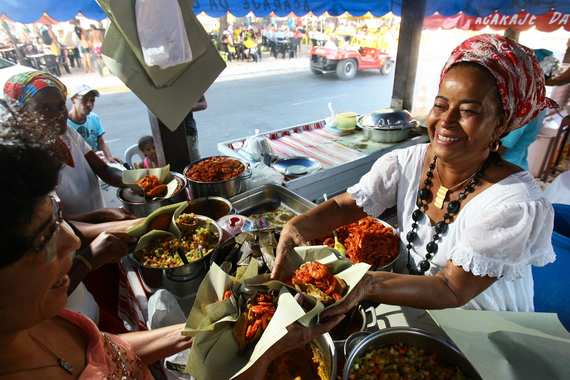
Prior to the religious freedom and “respectability” the faith has accrued today, Candomblé was viewed as an inferior and barbaric religion. Under the Portuguese colonial regime during the 19th century–as typical of European imperialism–enslaved Africans were forced to a policy of assimilation or rather cooptation; as the Portuguese vehemently denied the right for Africans to exercise their religious system but enforced their own.
Though the Portuguese imposed their Catholicism, Ifá thrived as its indigenous core values syncretized with the inflicted Christian ones due to the heavy populous of Yoruba peoples in Brazil. Within this new religious dynamic, Ifá in Brazil was cultivated as the Orishas –unbeknown to the Portuguese–were canonized and edified by way of the pantheon of the Catholic saints. Although syncretism was an essential form of preservation to sustain African religiosity in Bahia, an important element to note is that Ifá — as a Yoruba tradition — was exercised in Catholicism as a mechanism to culturally and religiously survive and used not so much to adopt the Christian faith but to adapt. The Christian saints were merely symbolic vessels for the Orishas that were appropriated to comply to the religious imperialism of the Portuguese.
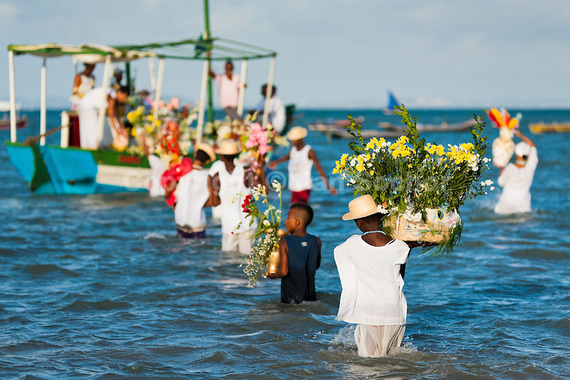
According to Sheila Walker, a scholar on Afro-Brazilian culture and religion, “Africans could adapted so well to outwardly observing the feast day of the saints as they were acquire to do so because they could perceive the spiritual beings they were honoring not as European saints, but symbols of the people who were oppressing them, but also as representations of the Orisha whom the saints most closely resembled.”
The Ifá tradition in Brazil not only infiltrated itself by way of syncretism but also through means of commercial trade. Several freed black Bahians participated in trade with Africa and many of the products that were imported from the Gulf of Benin were materials used in Candomblé such as red feathers, dyes and fabric. According to Patricia de Santana Pinho, author of “Mama Africa: Reinventing Blackness in Bahia”, within these materials included secret religious directives and information which connected Brazil and Africa despite the Transatlantic divide. Not only were intercontinental messages sent between Bahia and Africa, many devotees of the Ifá tradition in Africa traveled to Bahia to reclaim the religious practices that vanished from the continent yet were protected and conserved in Candomblé temples.
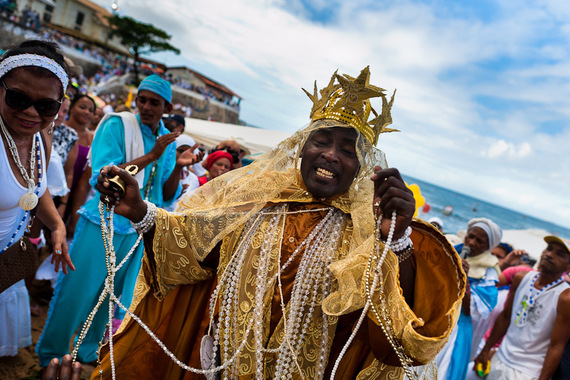
Many believers of Candomblé, though possessing a duality of faith in both Catholicism and Candomblé practice the faiths respectively, essentially what is practiced in Bahia is Ifá itself; as the practices of Christianity were not so much as influential to Ifá as Ifá was to Brazilian Catholicism. Despite the fact that many devotees are now equipped to end the hybridized notion of Orisha and sainthood, there is a duality that remains among the new generation of Afro-Brazilians who practice Candomblé, who recognize their faith as an indigenous African religious entity but still use overt Brazilian Catholic symbols in Orisha worship.
Though images of the European saints still stand in Candomblé houses, portraying Orishas who are not visually portrayed and many Candomblé priests and priestesses have been baptized Catholics, Walker describes these “two spiritual realities” in Bahia as non-contradictory and even complementary as it ultimately represents and eternalizes African Orisha worship.
Even in the midst of oppression, colonialism, and racism, Ifá, as form of African religiosity, was able to survive within a Pan-Africanist paradigm in the African Diaspora, despite Portuguese slaveocracy and imperialistic methodologies to thwart the religion. Though Candomblé in Bahia represents what Pinho calls a “scale of Africanism”, these “Africanisms” are African nonetheless; as they represent and perpetuate the intrinsic power and force that prolific political scientist Ronald Walters described, which “drives African-origin people to continue identifying with the source of their cultural origin.”
[ad_2]
Source link





















